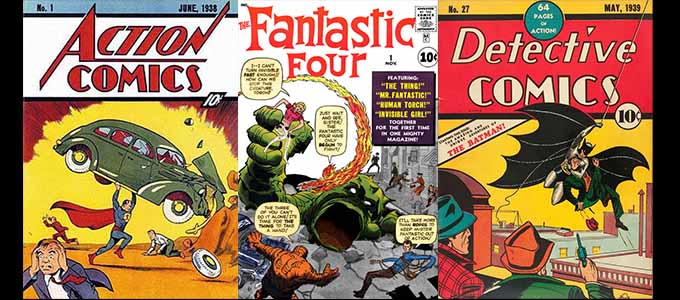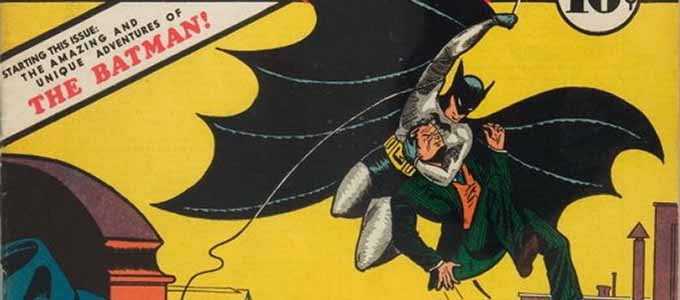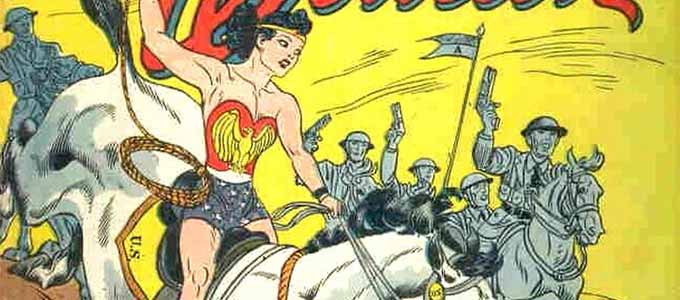This page may contain one or more affiliate links, which means that if you purchase a product through that link, I may receive compensation. The links will be identified with the text "affiliate link". Click to learn more.
Are comic books and graphic novels just stuff for kids, or is there more there? As we explore the history of comic books, we will see how history has found its way into comic books and vice verse, creating a major impact in the way we see things today.
One of the first characters to make a big splash in 1938 was, of course, Superman. Created by two poor Jewish kids from Ohio, Superman was a combination of current comic strips and pulp magazines.
Superman was not instantly successful, until comic books came into prime time. Originally, comic books were simply reprinted comic strips. However, Superman fit this model like a glove.
One of the reasons that Superman was so successful was because Superman lived in the same world that we all live in. While many stories took place in fantasy places or other countries, Superman lived in the common city. This made an impact when considering the history of comic books.
Another reason that made Superman accessible is that he had a secret identity. When he was not doing his job as Superman, he would deal with every day issues, and would help readers fantasize that, what if they were secretly super?
Superman’s popularity exploded. Superman issues would sell over a million copies. There was a Superman radio show, Superman lunch boxes, Superman everything.
By then, Superman’s publisher, DC Comics, wanted another costume hero. In the 27th issue of Detective Comics premiered Batman. Superman may have had powers, but Batman had none. Batman, like many in the time period, was a witness to brutal crime, as his parents were murdered in front of his eyes.
Batman’s dark characteristics made him extremely popular. Due to DC’s incredible success, other publishers realized the potential of costumed characters. Other characters began to appear, such as Green Lantern, the Flash, and others. DC Comics was the biggest publisher, but a new competitor appears called Timely Comics. Timely Comics later became Marvel Comics.
In 1939, the “Father of Modern Comics” appeared at Timely Comics: Stanley Martin Lieber. He is better known by his pen name, Stan Lee. Mr Lee thought that comic books should appeal to an older audience. He fought an uphill battle, because publishers were sure that comic books were read almost exclusively by children. They banked on it, in fact, knowing it is what kids spent their money on.
Knowing comics were geared for children, DC decided to add a new character to the mix: Robin. Robin became Batman’s child side-kick. The idea was that Robin could be a character that children could relate to. The Scheme worked, and sales of Batman comics doubled.
By the same token, a new character, Captain Marvel, was created by Marvel. Captain Marvel was actually a little boy who would transform into a powerful character when he would say “Shazam”. Unfortunately, DC decided to sue when Captain Marvel began outselling Superman, whom they felt was a similar character. DC ended up winning the rights over Captain Marvel in 1954.
Golden Age of Comic Books
When the war in Europe began, things began to get interesting with the history of comic books. Many comic books adopted the idea of fighting Hitler and the Nazis. The most apparent example was the first issue of Captain America. On the cover, Captain America is punching Hitler squarely in the mouth.
When America officially entered World War 2, comics showed their support by intensifying the pro American propaganda. Sales shot up, and World War 2 was the tip of the “Golden Age of Comics”.
A new character was born around this time: Wonder Woman. A comic character created by a psychologist, Charles Moulton (one of the inventors of the lie detector) essentially created a female Superman in 1941. Like Superman, she was super strong, and she had gadgets like a lasso that could force people to tell the truth.
Wonder Woman, like many other characters, would urge kids to support the war effort by recycling paper. Ironically, this lead to comic books from this age becoming scarce, and eventually making them extremely valuable.
After the war ended, politicians turned on comic books in a negative way. As the history of comic books tells us, comics began to be blamed for the cause of violence and other such things. By this time as well, readers began to become more interested in other topics, and popularity began to fade. A book, “The Seduction of the Innocent”, some say nearly destroyed the comic book industry.
In response the industry created the Comics Code Authority, which was an organization that would provide seals of approval on comic book covers to assure that they were safe for children to read. Everything that was made had to be sent to be approved first. By then though, it was too late. Except for Batman, Superman, and Wonder Woman, DC had to cancel most of their titles due to falling sales.
By the later 50s, many children were not familiar with comics books, and turned their attention to television. DC found new success as old characters were updated, such as Green Lantern and the Flash.
Modern Age of Comic Books
Marvel Comics began to publish the Fantastic Four, a group of family and friends who gained powered from cosmic rays. Their creation marked the “Modern Era” of the history of comic books. Following the trend of nuclear technology in stories, the Incredible Hulk was created as well. Other characters returned from being created years before, such a the Submariner.
Around the time of the Vietnam War, a new rebellious generation loved characters who questioned authority. In addition, fan mail being sent made it apparent that not just very young children are reading comic books anymore. This lead to Stan Lee creating the teenage superhero Spider-Man.
Superheroes in comic books began to have real problems that readers could relate with. This lead an era in the history of comic books that made the characters seem more realistic and plausible.
The Future of Comic Books
Comic Books have migrated into a digital medium, as have many things. Paper subscriptions have become less common and more scarce. There also has been, as in the past, a “reboot” of many popular characters which have resulted in new styles and recycled stories. We have examined the history of comic books, but the question forever remains: what does the future hold for comic books?
If you would like to know more about the history of comic books, I recommend the documentary Comic Book Confidential (affiliate link) from 1988. It is the ultimate documentary on comic books.



